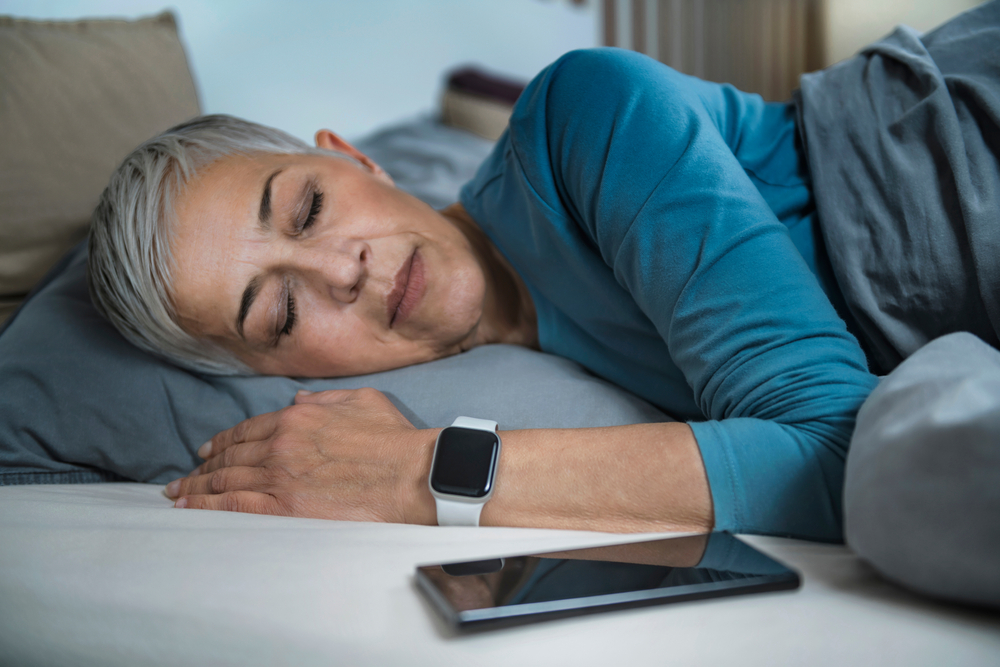
In today’s digital age, technology is woven into nearly every aspect of our lives. From smartphones and tablets to laptops and smart TVs, screens are often the last thing we see before bed and the first thing we check in the morning. While technology has brought countless benefits to communication, productivity, and entertainment, it has also significantly disrupted one critical area of our lives: sleep. The increasing use of digital devices, particularly in the evening, is having a profound impact on the quality of sleep, leading to a range of health and cognitive issues.
This article explores the various ways in which technology affects sleep and provides practical strategies to combat these disruptions for healthier, more restorative rest.
1. The Science Behind Sleep Disruptions Caused by Technology
Before diving into how technology interferes with sleep, it’s essential to understand the mechanics of sleep itself. The body’s internal clock, or circadian rhythm, regulates sleep-wake cycles. This rhythm is heavily influenced by external factors, particularly light exposure. When the brain detects light, especially the blue light emitted by screens, it suppresses the production of melatonin—the hormone responsible for promoting sleep.
A. Blue Light Exposure
Blue light is a high-energy visible light that digital devices emit in large amounts. Studies have shown that exposure to blue light, especially in the evening, can delay the onset of sleep by reducing melatonin production. The problem with blue light is that it mimics natural daylight, sending signals to the brain that it’s still daytime, even if it’s late at night. This disruption confuses the body’s natural sleep-wake cycle, making it harder to fall asleep.
B. Cognitive Stimulation
Aside from blue light, technology keeps your brain engaged and alert, which can interfere with your ability to wind down at night. Whether you’re scrolling through social media, reading news articles, or watching intense TV shows, your mind is actively processing information, making it harder to relax and transition into sleep mode.
C. Delayed Sleep Onset
Due to these factors, people who use technology late into the evening often experience delayed sleep onset, meaning it takes longer for them to fall asleep. The longer it takes to fall asleep, the less time the body has to enter the deep, restorative stages of sleep necessary for overall health.
2. The Consequences of Poor Sleep Due to Technology
The consequences of technology-induced sleep disruption are far-reaching, affecting both physical and mental well-being. Over time, poor sleep can lead to several health issues, including:
A. Decreased Cognitive Function
When the brain doesn’t get enough sleep, cognitive functions like memory, attention, and decision-making are impaired. Studies have shown that sleep deprivation reduces productivity and increases the likelihood of making mistakes, particularly in tasks that require focus and precision.
B. Weakened Immune System
Sleep is crucial for a healthy immune system. During sleep, the body repairs and regenerates tissues, including those related to the immune system. A lack of sleep can leave the body more vulnerable to infections, inflammation, and chronic diseases such as heart disease and diabetes.
C. Increased Stress and Anxiety
Sleep deprivation can worsen mood disorders like stress, anxiety, and depression. In fact, there is a cyclical relationship between sleep and mental health—poor sleep contributes to mental health problems, and mental health issues can further disrupt sleep.
3. Common Technology-Related Sleep Problems
Several specific technology-related behaviors are known to disrupt sleep. Understanding these behaviors can help identify what may be impacting your rest.
A. Smartphone Overuse
Smartphones are often the primary culprit when it comes to disrupted sleep. Many people use their phones right before bed, whether to check emails, scroll through social media, or watch videos. This habit not only exposes you to blue light but also keeps your mind engaged and alert.
B. Late-Night Streaming and Binge-Watching
The rise of streaming platforms like Netflix, Hulu, and Amazon Prime has made it easier than ever to binge-watch TV shows and movies late into the night. While this may be a fun way to unwind, watching stimulating or emotionally charged content before bed can delay sleep and affect its quality.
C. Overstimulation from Gaming and Social Media
Social media and gaming can be addictive and overstimulating, often leading to extended periods of screen time. Engaging with content that triggers strong emotional responses—whether through online games, tweets, or posts—can increase cortisol (the stress hormone), making it harder for the body to relax and fall asleep.
4. Strategies to Combat Technology-Induced Sleep Disruption
Fortunately, there are several strategies you can implement to mitigate the negative effects of technology on your sleep. By making conscious adjustments to your nighttime routine and usage habits, you can improve both the quality and quantity of your sleep.
A. Set a Digital Curfew
One of the most effective ways to prevent technology from disrupting your sleep is to establish a “digital curfew.” Aim to turn off all screens at least 30 to 60 minutes before bedtime. This gives your brain and body time to relax and wind down naturally, promoting the production of melatonin.
B. Use Blue Light Filters or Night Mode
If you must use your devices in the evening, consider using blue light filters or enabling night mode on your smartphone, tablet, or laptop. These settings reduce the amount of blue light emitted by your screen, which can lessen the impact on your circadian rhythm.
For example, most smartphones come equipped with a “night shift” mode that adjusts the screen’s color temperature, making the light warmer and less disruptive to your sleep. Additionally, blue light blocking glasses can be worn if you need to be in front of screens in the evening.
C. Create a Tech-Free Bedroom
Creating a bedroom environment free from technology is another great way to encourage better sleep. This means leaving your phone, tablet, or laptop outside the bedroom at night. If you rely on your phone as an alarm clock, consider purchasing a traditional alarm clock to avoid the temptation to scroll in bed.
D. Develop a Relaxing Bedtime Routine
Replace late-night screen time with calming, non-digital activities that signal to your body that it’s time to sleep. Consider reading a physical book, practicing deep breathing exercises, or doing gentle stretches before bed. These activities promote relaxation and help reduce the stress and anxiety that technology can induce.
E. Keep Technology Use in Check During the Day
Limiting technology use during the day can also help improve your sleep. If you find yourself constantly staring at screens, take regular breaks to reduce eye strain and mental fatigue. Engaging in outdoor activities or spending time in natural light can help regulate your circadian rhythm and enhance the quality of your sleep at night.
F. Set Boundaries with Social Media and Email
Social media and email notifications can be disruptive, particularly when received late at night. Set boundaries by silencing notifications after a specific time, or use “do not disturb” modes to prevent interruptions during your wind-down time.
5. The Role of Sleep-Tracking Technology
Ironically, some forms of technology can actually help improve sleep by providing insights into your sleeping patterns. Wearable devices like smartwatches and fitness trackers can monitor sleep cycles, duration, and quality. By tracking your sleep data, you can identify potential disruptions and make informed adjustments to improve your rest.
However, it’s important to approach sleep-tracking technology with caution. While these tools can be helpful, they should not become another source of stress or obsession. Use them as guides rather than strict metrics.
Technology’s impact on sleep is undeniable, but with mindful habits and deliberate strategies, you can mitigate its negative effects. By establishing a digital curfew, using blue light filters, and creating a tech-free sleep environment, you can improve your sleep quality and overall well-being. Additionally, developing a relaxing bedtime routine and keeping daytime technology use in check can further support healthy sleep patterns. As technology continues to evolve, it’s essential to strike a balance between staying connected and prioritizing restorative sleep. With the right approach, you can enjoy the benefits of technology without sacrificing your health.







